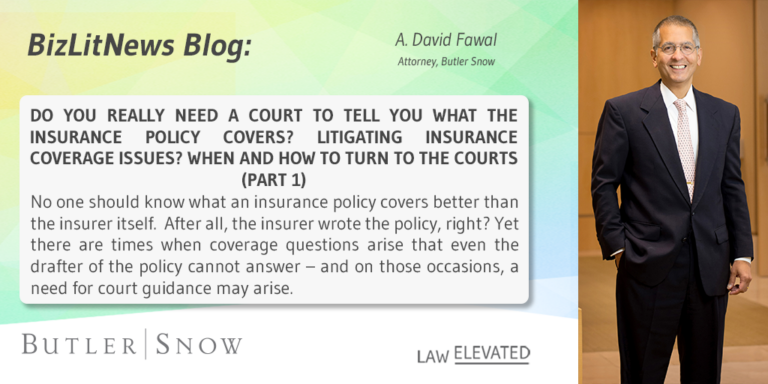No one should know what an insurance policy covers better than the insurer itself. After all, the insurer wrote the policy, right? Yet there are times when coverage questions arise that even the drafter of the policy cannot answer – and on those occasions, a need for court guidance may arise. This blog is part one of a brief discussion of the options that exist when coverage questions arise, although specific procedures vary by state.
As an initial matter, and stating what should be the obvious, if there is no coverage, there is no coverage. And there is no duty to defend if there is no coverage. If the facts and policy language support denial, don’t be afraid to deny. However, what if the coverage question is not clear cut? Or what if some claims are covered and others may not be? Court involvement may be appropriate in such instances.
One method allowed in some states for addressing coverage issues is intervention. This usually arises where coverage issues exist after an insured has been sued. Often, the complaint will assert covered and non-covered claims against the insured. The insurer can tender a defense pursuant to a reservation of rights letter, and hire separate coverage counsel to intervene in the lawsuit. The argument for intervention is that it promotes judicial economy, minimizes the possibility of multiple actions and inconsistent verdicts, and does not prejudice the rights of the original parties. Some states do not allow insurers to use this process, while others allow it through permissive intervention, when one or more of the claims asserted against the insured may not be covered under the pertinent policy. Of course, use of “permissive intervention” means the trial judge has discretion to deny the insurer’s request to intervene.
Under one type of intervention, the insurer can request special verdict forms or special interrogatories to determine the basis for the jury’s verdict (in the event of a verdict against the insured). An intervening insurer can also request to participate in discovery and attend depositions to obtain information that may be pertinent to the coverage questions. However, the jury should never hear about the existence of insurance or the presence of the insurer or its counsel.
In some instances, the courts can go even further and allow the intervening insurer an alternate “bifurcated trial” procedure. After the liability trial against the insured (again, assuming a verdict against the insured), the same jury then hears the coverage trial. Of course, the downside of a bifurcated trial for the insurer is the jury has already found for the plaintiff against the insured and awarded money. That same jury may be highly inclined to then find coverage to insure the plaintiff gets paid. Another negative of the bifurcated trial is that the jury is familiar with all of the parties and lawyers from the underlying liability trial. Now in phase two of the bifurcated trial, the insurer and a new lawyer appear to contest coverage, and there is no relationship. Needless to say, agreeing to intervention for a bifurcated trial carries risks for the insurer, and if a court is inclined to proceed in that manner, an insurer should pass on intervention and instead consider filing a declaratory judgment action (DJ). Stayed tuned for part two where I will address the pros and cons of filing a DJ.
Authored by A. David Fawal

